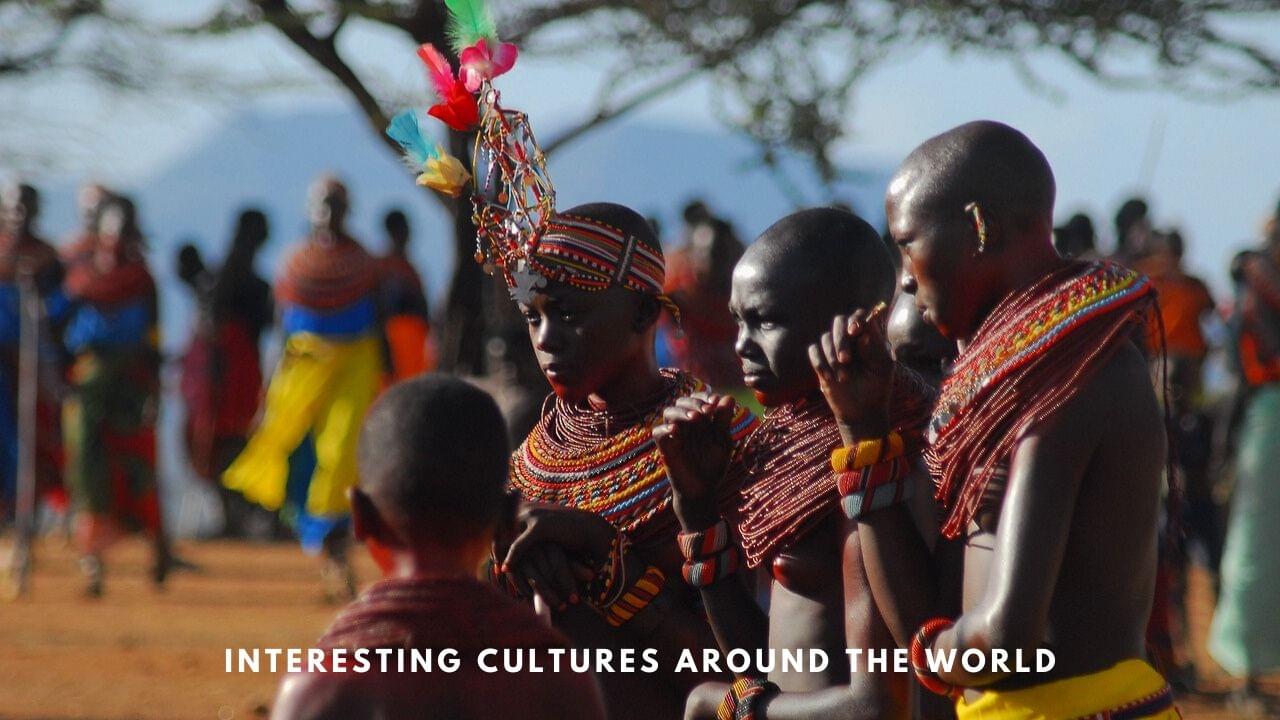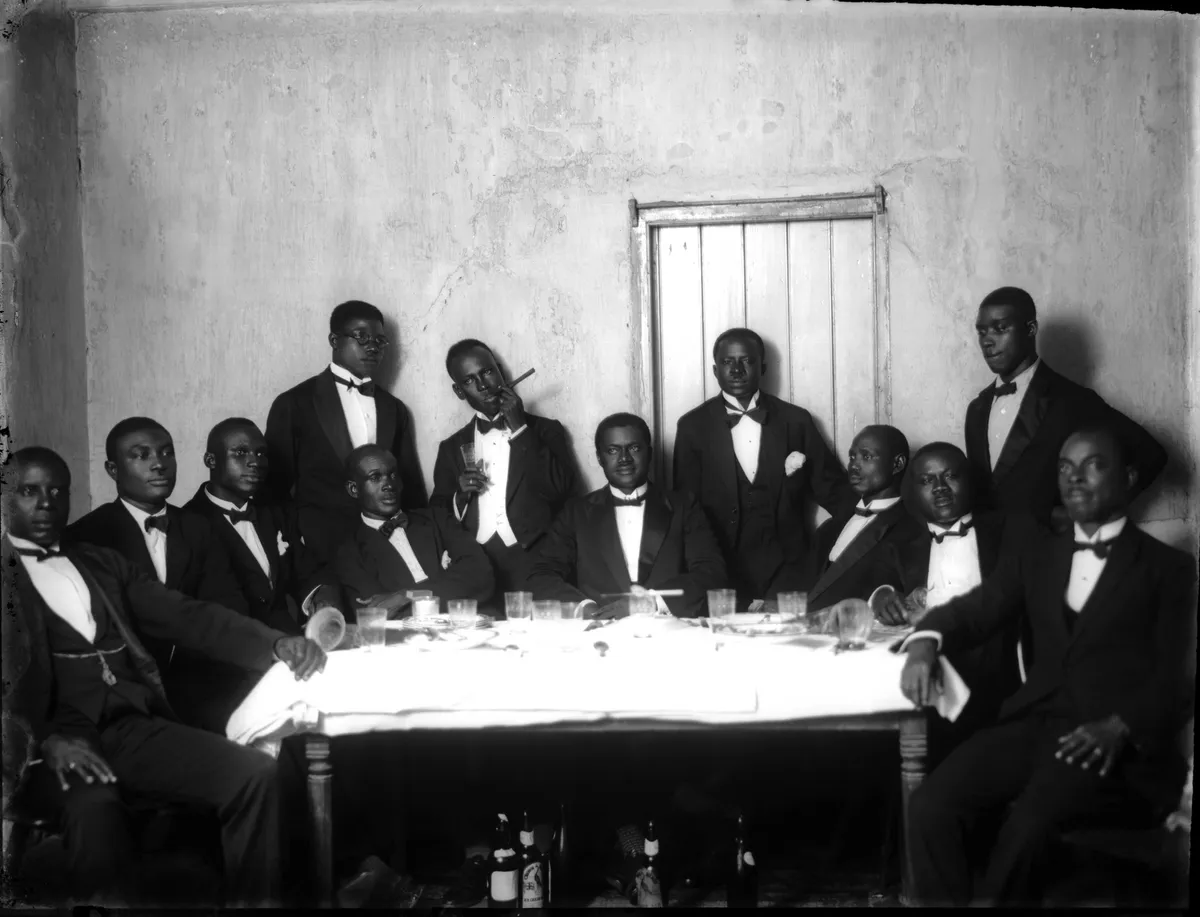Recognize the world’s vastness and diversity. We are out of our comfort zone and also appreciate life’s small pleasures. We have visited some incredible places and explored some remote destinations after about 15 years of traveling through various parts of India and around the world. However, our favorite part of our road trip has always been meeting new people and learning about different cultures. Agni and I enjoy documenting places and people, cultures and traditions that are unique, vanishing, or changing with the passage of time. Here are some of the interesting cultures around the world as suggested by my travel blogger friends. This blog contains some of the interesting customs and traditions of the people.
1. The Head Hunters of Nagaland, India
Northeast India is home to many fascinating tribes and cultures, but the Konyak tribe, or the fierce headhunters of Nagaland, appears to be the most intriguing to us. Konyaks, one of the largest tribes in remote Nagaland, are known for their valour, taking pride in severing the heads of their opponents as trophies to be hung at their Morungs (a traditional community house). The Konyaks can be seen in the remote village of Longwa in Nagaland’s Mon district.
Headhunting was still practiced in Nagaland until 1969. The Konyaks believed that a young man’s passage to manhood could only be completed if he returned to the village with a head. So they used to fight their enemies in order to kill them, rip off their heads, and return the heads to decorate the Morungs. With each kill, they received a tattoo on their face and chest, which is one of the tribe’s most intriguing features. These tattoos represent their honor and pride, and the Konyaks believe that if they do not get a tattoo, they will not have a good afterlife.
Things have changed since the advent of modernity. The Konyaks are no longer headhunters, but they retain their brave and fierce nature. Only a few headhunters remain in the Longwa village. The best time to see the KonyakNagas is during the Aoling Festival, which is held in April each year.
2. Nyishi Tribe from Arunachal Pradesh, India
The Nyishi tribe is one of the largest indigenous tribal groups in Arunachal Pradesh, which is located in north-eastern India. Nysihis cultural practices and beliefs are similar to those of Mongoloid tribal groups in Myanmar. The Nyishis identify as the descendants of Abo-Tani, a mythical forefather.
They speak Tibeto-Burman and are still working on a script. Because they don’t have anything written down, it’s fascinating to learn that they pass on their culture, rituals, and history from generation to generation through an intriguing oral tradition of folklore. Nyishis have a firm belief in their culture and rituals. They believe that if rituals are not performed religiously, they can cause problems.
Mithun (traditional cattle) is important in all aspects of life, whether they are social, cultural, economic, or religious. During the marriage, the groom pays the bride price in the form of Mithun, and they sacrifice Mithun (sacred to them) to appease their deity in almost all of the ceremonial rituals.
I was intrigued by their Traditional Grain Analysis (Amyemch Hikanam) Ritual, in which the priest holds a bamboo measuring cup and asks a woman to fill it with grain, then predicts her future based on how she filled the cup. Isn’t it fascinating?
Nyishis, in contrast to our urban society, are quite progressive. They treat their women equally and include them in decision-making.
I adored their people, culture, traditions, dance (Rikham Pada), clothing, homes (Namlo), and local brew apong served in a lovely patha ( a goblet made of bamboo shoots). They live in absolute peace and harmony in this fast-paced and competitive world where people are trying to pull each other down. Nyishis are simple, honest, always smiling, and realistic about their culture and nature. They accept things as they are and do not try to change anything for selfish reasons. They are also fantastic hosts.
3. Kalash People
The Kalash, one of the world’s most fascinating cultures, are a distinct people who hail from three small valleys in the mountains of western Pakistan: Bumburet, Rumboor, and Birir. The valleys lead to mountains bordering Afghanistan in northern Khyber Pakhtunkhwa province.
The Kalash people are distinct in several ways. Some researchers believe they are descended from Alexander the Great’s armies; some of his men remained on the Indian subcontinent after his campaign through the region. Despite popular belief in Pakistan and India, the Kalash are the only people whose genes show an injection of European DNA around the time of Alexander’s campaign.
Aside from the veracity of the claim, there’s no denying the Kalash people don’t resemble their neighbors. Many men and women have fair skin and light eyes, which is unusual for South Asians.
The Kalash have their own religion and culture as well. Despite Pakistan’s Muslim majority, the Kalash are animists. Kalash culture is thought to be related to ancient Hinduism. The Kalash make and drink their own alcohol. Women wear brightly colored dresses and headpieces with unique Kalash embroidery.
The pinnacle of Kalash culture can be seen at one of three major Kalash festivals. At each festival, people dress up, drink, and dance while praying for a successful harvest, animal protection, and so on.
Though I recommend visiting the Kalash Valleys if you visit Pakistan, please respect their traditions and culture and treat them with the respect they deserve.
4. Tibetans, Tibet
I’ve been fascinated by Tibetan culture for many years, ever since reading Alexandra David-My Néel’s Journey to Lhasa. David-Néel demonstrates a deep respect and fascination with Tibetan Buddhism in this account of how she entered Lhasa disguised as a Tibetan beggar to learn about Buddhism from Tibetan lamas, which I found contagious.
Since reading My Life in Tibet, I’ve been fascinated by Tibetan culture. I’ve encountered Buddhism in numerous Asian countries and have always related to and connected with its teachings of compassion and nonviolence toward all sentient beings. But Tibetan Buddhism has always seemed mysterious to me, and I was captivated by the eerie tones of the singing bowls, the deep guttural vibrations of the chants, and the vibrant colors of the sand mandalas.
While you’re probably aware that Tibetans are from Tibet, it’s worth noting that the Tibetan Autonomous Region, as defined by the Chinese government, is not the only place where Tibetans live. Tibet used to encompass a much larger area that is now part of the Chinese provinces of Gansu, Sichuan, and Qinghai. In some of these provinces, ethnic Tibetans still constitute the majority of the population.
These areas may be more rewarding to visit because, unlike the Tibetan Autonomous Region, foreigners are permitted to visit on their own. A visit to the Labrang Monastery in Gansu province, for example, can be an excellent way to immerse oneself in Tibetan culture without having to join a Chinese-approved tour group. Just keep in mind that some parts of these provinces remain completely closed to foreigners, and these regulations can change at any time, so be sure to check official websites for the most up-to-date information.
5. Rungus, Sabah
With young people flocking to cities in search of work, the future looked bleak for ethnic groups such as the Rungus, who live near the tip of Borneo in Sabah, Malaysia. Tourism, on the other hand, has the potential to save their culture by encouraging them to revive traditional crafts like dancing, gong-making, playing the nose flute, and building traditional longhouses. I had the opportunity to spend a few days living with a Rungus family and participating in their daily lives.
Much of that life revolves around food, which is grown on family-owned land and cooked fresh every day: rice, a variety of green vegetables I didn’t know existed, fish, of course, given the proximity of the sea, and chicken. It wasn’t particularly spicy, but it was delicious and filling.
Gong-makers in the nearby village of Kampung Sumangkap hammer and shape zinc sheets into curved, vibrating instruments. This is an important traditional skill because the gong is the most prized musical instrument in Rungus culture and is used for all major events. It, too, faced a bleak future until the Rungus realized that visitors would enjoy the gong-making and purchase gongs to take home, bringing much-needed income to local communities.
With the increase in tourism in Sabah, villagers can now supplement their income by performing traditional crafts such as gong-making, bead-stringing, dancing, singing, nose flute-playing, and maintaining longhouses. While young people continue to migrate to cities, they now have the option of staying closer to home because jobs are available.
6. Akhu Tribe, Kengtung Myanmar
Kengtung (or Kyaing Tong) is a town in Myanmar’s Shan State and one of the best places to visit if you want to learn more about the country’s cultural diversity (there are more than a hundred of distinct ethnic groups in Myanmar). The Kengtung district is located in Southeast Asia’s golden triangle. As a result, there are various influences from neighboring countries, and some of the local tribes can also be found in neighboring states.
Kengtung (or Kyaing Tong) is a town in the Shan State of Myanmar. We visited some of the local tribes during our visit to Kengtung. The visit to the Akhu village was one of our most memorable. The Akhu women are known for their long bamboo pipes, which they enjoy smoking and will gladly demonstrate for their visitors. They wear black headwear (similar to a turban), and most of their clothing is black as well, with the exception of colorful bead necklaces and beautiful silver earrings. Their homes are simple, unadorned wood huts with no running water or electricity. The local guides do everything they can to assist the local communities.
In terms of religion, the village was once an animist village, but missionaries converted the villagers to Christianity, as they did many of the tribes in the area.
We were invited to a local home and were able to converse with our hostess with the assistance of our guide. Her friendly demeanor made us feel at ease, and we could tell she enjoyed smoking her long pipe for us and telling us about her day. The women of the village appear to live well into their 80s or even 90s, which is remarkable given the village’s poor medical care. The men, on the other hand, rarely live past the age of 60. It is difficult to explain this difference because both men and women work extremely hard. Anyone who enjoys learning about different cultures and discovering hidden gems should make an effort to visit Kengtung in Myanmar.
7. Black Hmong, Northern Vietnam
The Black Hmong are a minority ethnic group in Northern Vietnam. Supan, Lao Chai, and Cat Cat Village are among the villages where the ethnic group has settled near Sapa. When I first traveled solo to Vietnam a few years ago, I had the opportunity to meet them in Sa Pa.
My first encounter with the Black Hmong people occurred when I participated in a trekking tour around Lao Chai, and what surprised me was that the majority of the Black Hmong people who participated in the tour were women. Except for a few times when we passed through the rice fields, I didn’t see any Black Hmong men.
As it turned out, the Black Hmong are an ethnic group with strong feminist values embedded in their traditions and culture. They value gender equality, and the majority of Black Hmong families have both men and women as breadwinners. While Black Hmong women typically rely on their embroidery skills to make ends meet, men typically master skills such as livestock handling and crop cultivation.
Aside from that, the majority of Black Hmong women work as tour guides in their villages. If you join a group tour, even if the tour has a designated guide for you and other people, you will almost certainly be followed by some of these Black Hmong women who will interact with you and assist you while trekking. The trekking trail around Sapa town, on the other hand, is steep and may be difficult for some of us. I know because it was written specifically for me.
8. Toraja, Indonesia
A valley surrounded by mist-clad mountains on the Indonesian island of Sulawesi. Tana Toraja, or Toraja land, is the name of this valley, and it is the home of the Toraja people. For centuries, these mountains have protected the Torajas and their culture, and today this valley is one of the most unique in the archipelago.
The Torajas, one of the world’s most fascinating cultures, are tall, proud people whose most valuable possessions are their water buffaloes. As you explore the valley, you’ll see men grooming their buffaloes and decorating their horns and ears with flowers and colorful leaves. The intricately decorated houses in which the Toraja people live are also shaped after buffalo horns.
Toraja territory is best known for its elaborate funeral ceremonies. When a person dies, the Torajas consider them to be sick, and the body is kept in the house (inside a coffin) with the family. Meanwhile, the family will begin saving and planning for a proper send-off, which could take place a year or more after the family member has died.
Funerals in the valley are a somber yet fascinating event that you should not miss if you visit TanaToraja during the funeral season. The Toraja people believe that souls will only leave the earth after a buffalo is sacrificed, and at least six of these buffaloes will die on a funeral day.
Following that, the meat is divided among the community members, and a feast is prepared for the entire funeral party. Funeral season in Tana Toraja lasts from May to October, and if you happen to be in Rantepao during that time, you will almost certainly be invited.




